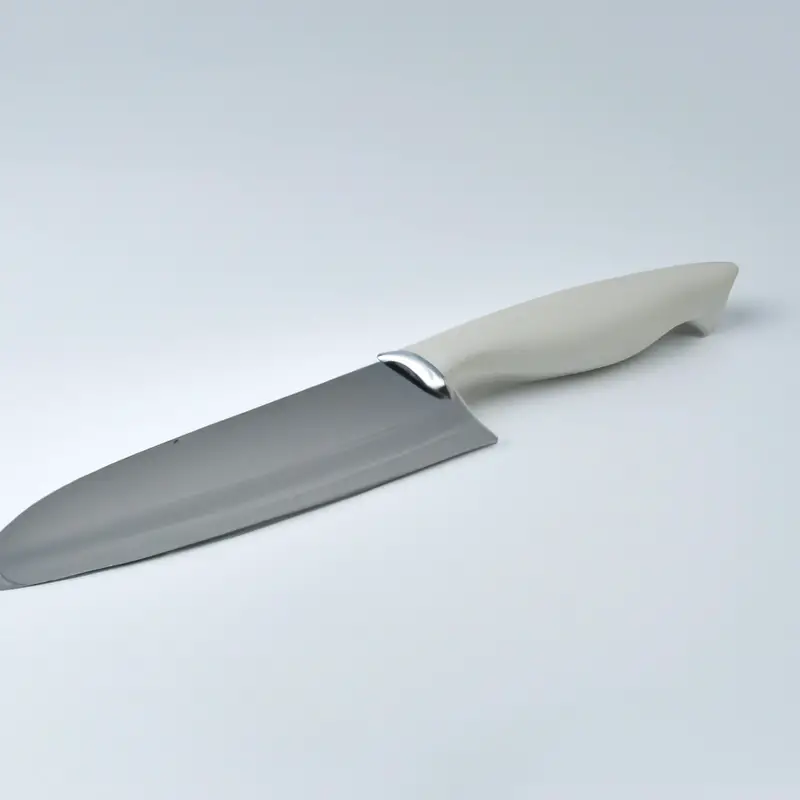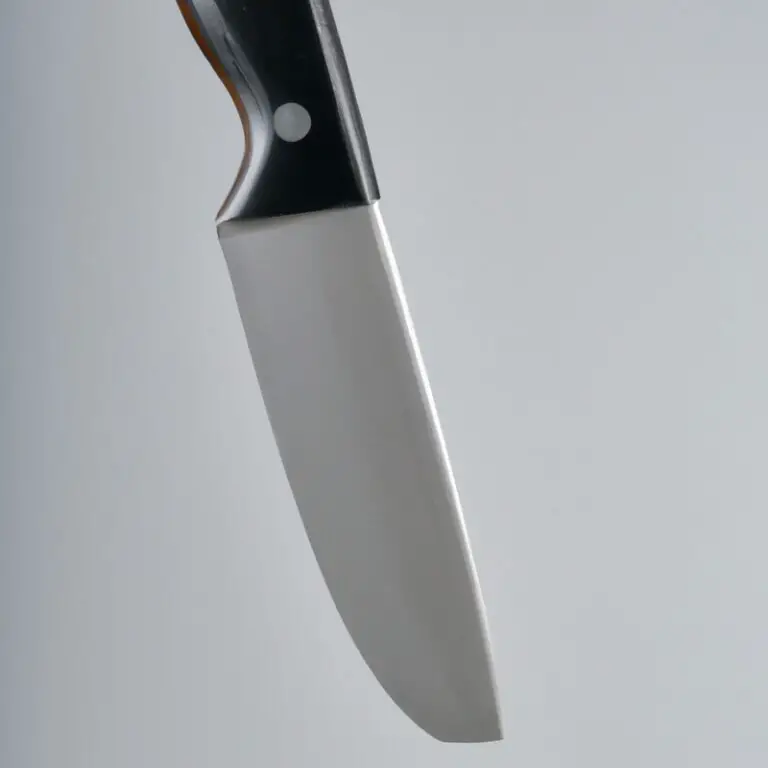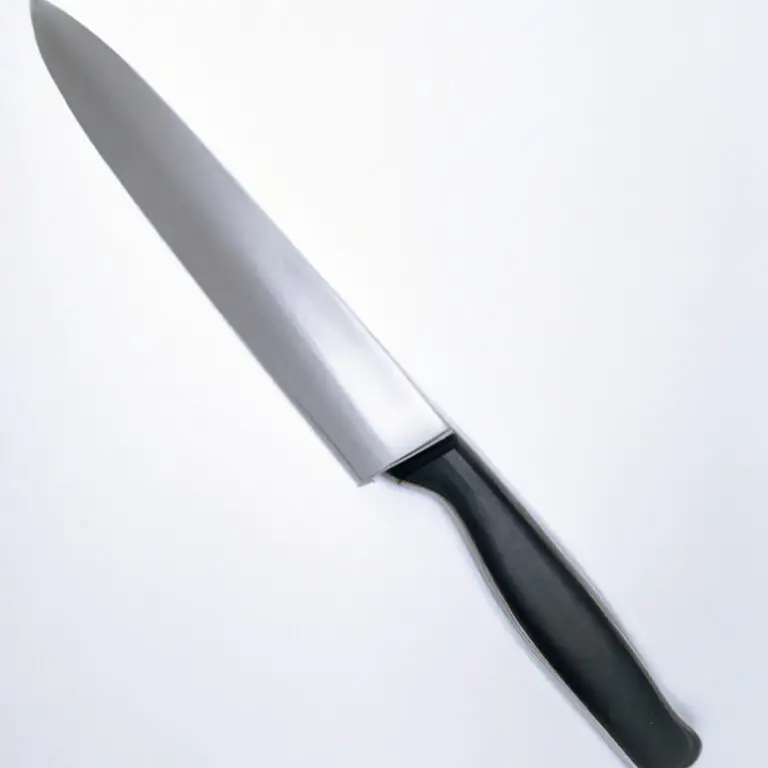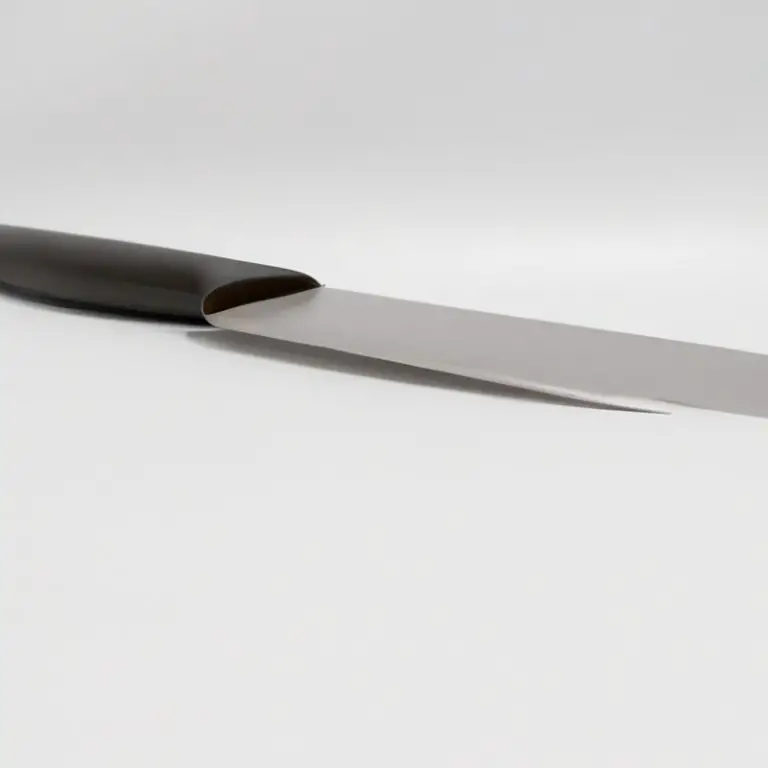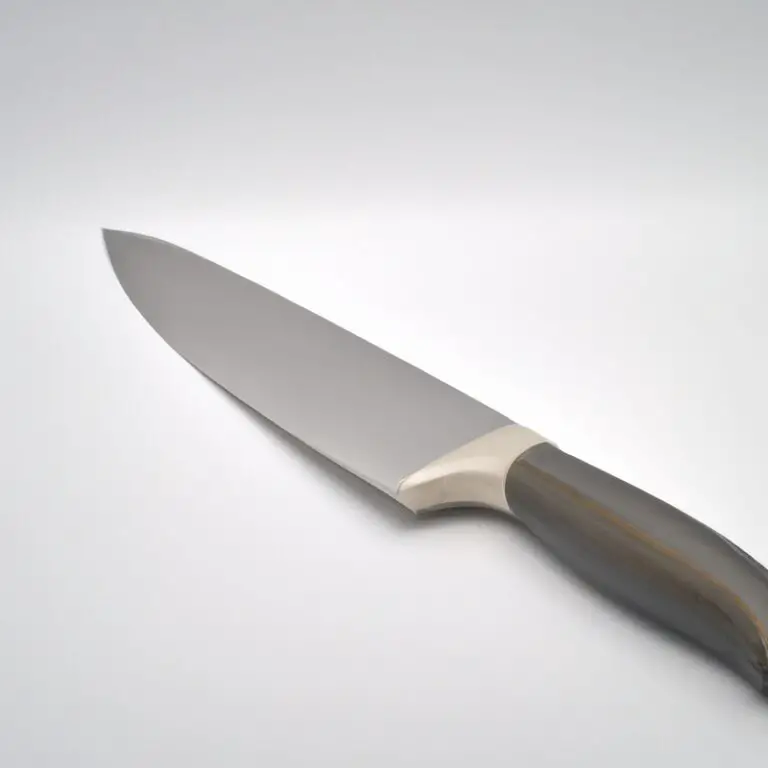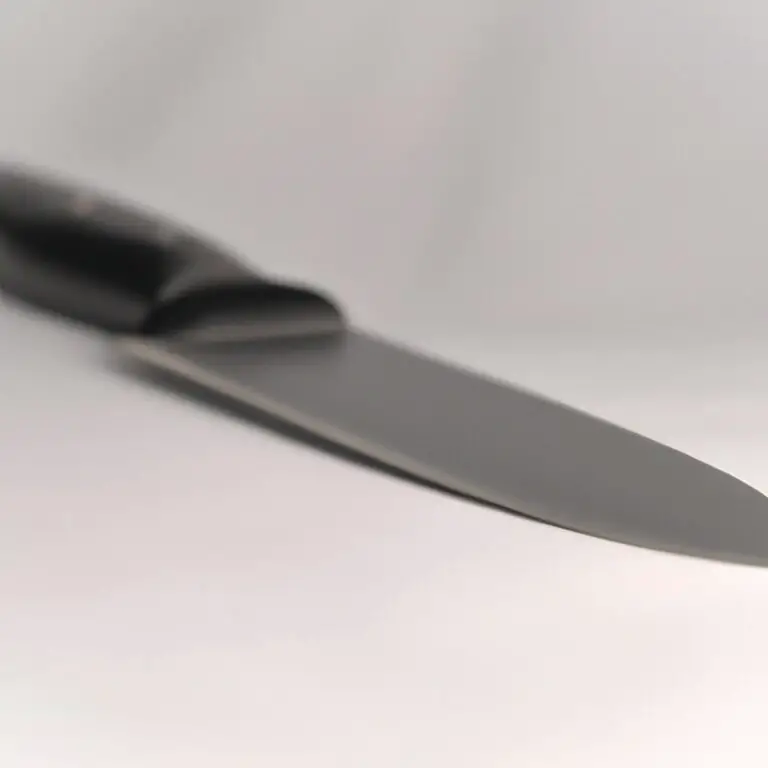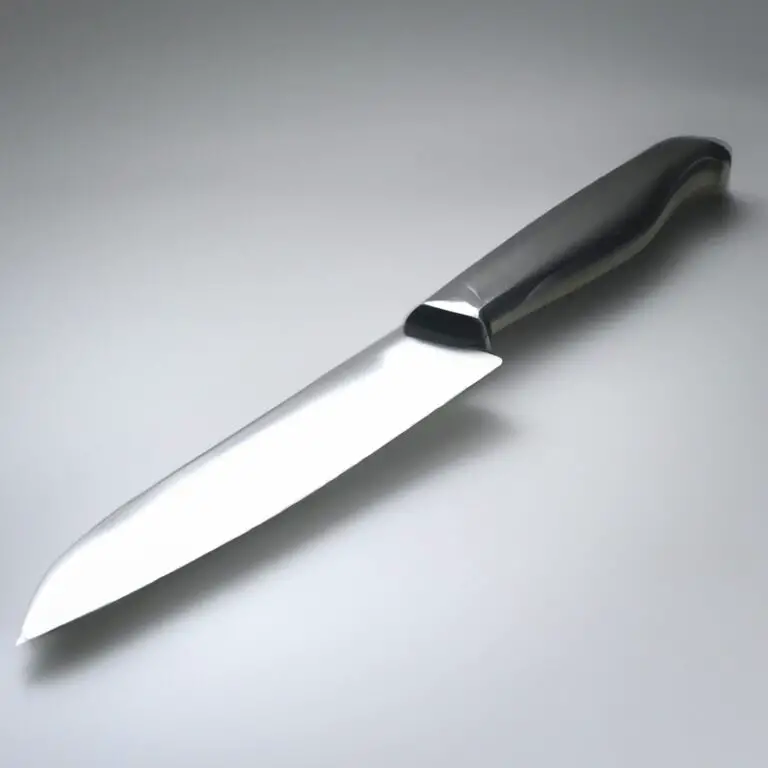How To Prevent Cross-Contamination With a Chef Knife? – Safely!
Key Takeaways:
- Keep a separate cutting board for raw meat, poultry, and fish to prevent cross-contamination with your chef knife.
- Use a different chef knife for each type of food to minimize the risk of transferring bacteria or allergens.
- Always wash your hands and chef knife thoroughly before and after handling different foods.
- Store your chef knife in a designated area away from other utensils and cutting boards to avoid accidental cross-contamination.
Have you ever found yourself worrying about whether or not your kitchen knives are clean enough? As a chef or home cook, preventing cross-contamination is crucial in ensuring that your food is safe to eat.
However, it’s not always easy to know exactly how to avoid spreading harmful bacteria with your chef knife.
In this article, I’ll walk you through the importance of preventing cross-contamination, explain how it occurs with a chef knife, and provide you with the best practices for keeping your knife and your food clean and safe.
| Step | Description |
|---|---|
| 1. | Designate only one side of the blade for cutting. Use the other side of the blade for resting and pushing ingredients. |
| 2. | Always use a clean cutting board. This will prevent any debris or bacteria from the previous use of the board from transferring to your food. |
| 3. | Wash your knife regularly while cooking. This will ensure that you are always working with a clean blade. |
| 4. | Avoid cross-contamination between ingredients. This involves using different knives or thoroughly washing your knife between uses when you are cutting different types of ingredients. |
| 5. | Store your knife properly. Keep your knife in a clean and safe place to prevent it from coming in contact with any unwanted debris or bacteria. |
Importance of preventing cross-contamination in the kitchen
Preventing cross-contamination in the kitchen is crucial as it can lead to foodborne illnesses, which can be fatal to individuals with weak immune systems. Cross-contamination occurs when harmful bacteria are transferred from one food item to another through contaminated equipment or surfaces.
This is why it is essential to keep kitchen surfaces and equipment clean and ensure different types of food are stored and prepared separately.
By preventing cross-contamination, we can ensure the safety of our food and protect the health of our loved ones.
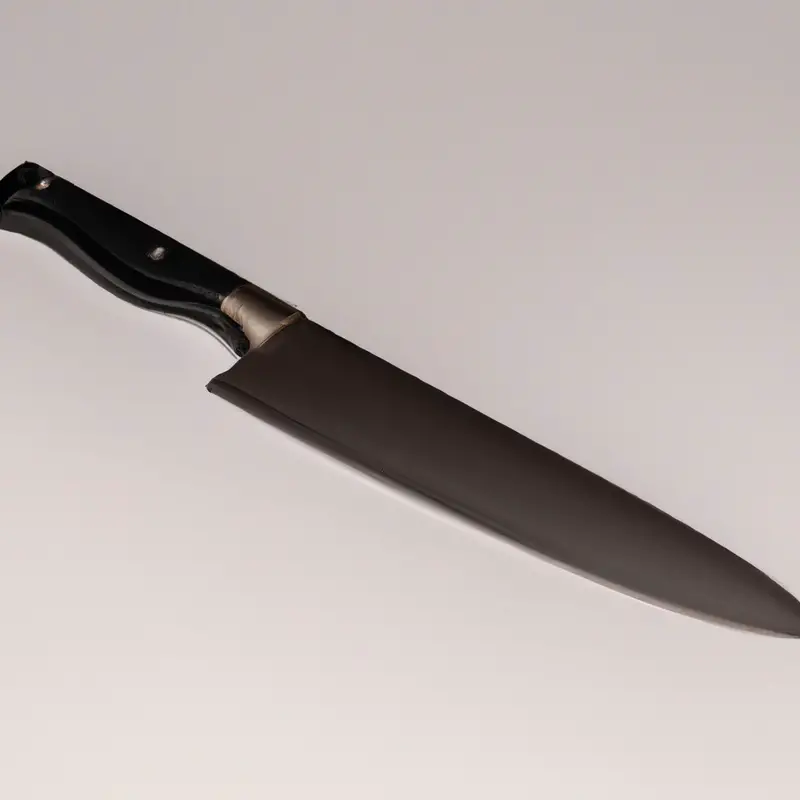
Understanding how cross-contamination occurs with a chef knife
Cross-contamination in the kitchen occurs when microorganisms, such as bacteria, transfer from one food item to another, leading to the spread of foodborne illnesses. Chef knives are a common source of cross-contamination because they come into direct contact with different food items during food preparation.
When using one knife for cutting raw meat and then using the same knife on cooked food, cross-contamination can occur, putting diners at risk of foodborne illnesses.
Other factors that contribute to cross-contamination with chef knives include improper use, storage, and cleaning techniques.
Proper sanitation techniques for chef knives before and after use
To prevent cross-contamination in the kitchen, proper sanitation techniques for chef knives before and after use are crucial. Here are some essential tips to follow: Before use:
- Wash your hands thoroughly with soap and water.
- Use hot, soapy water to clean the chef knife.
- Rinse the knife with hot water and dry it with a clean, dry towel.
After use:
- Immediately wash the knife with hot, soapy water.
- Rinse the knife with hot water and dry it with a clean, dry towel.
- Sanitize the knife with a solution of one tablespoon of bleach per gallon of water, or according to manufacturer’s instructions for a commercial sanitizer.
- Store the knife in a clean, dry place away from other utensils.
Following these proper sanitation techniques for chef knives will help prevent cross-contamination and keep your kitchen safe and healthy. Remember to also implement a cleaning and sanitation schedule, educate staff on cross-contamination prevention, and encourage good personal hygiene practices to ensure a hygienic kitchen environment.
Best practices for handling raw and cooked food with one chef knife
Using one chef knife for both raw and cooked food can be risky. However, there are best practices to minimize the risk of cross-contamination.
Here are some tips to handle raw and cooked food with one chef knife:
- Clean and sanitize the chef knife before and after every use, especially when switching between raw and cooked food.
- Use a cutting board specifically designated for raw food and another for cooked food to avoid cross-contamination.
- Use the chef knife only for its intended task. For example, avoid using the same knife for trimming meat and slicing produce.
- Use a color-coded chef knife with a specific color assigned to each task type, such as red for raw meat, blue for seafood, and green for produce.
- Wash your hands frequently and avoid touching your face, hair, or other parts of your body while handling food.
Adopting these best practices for handling raw and cooked food with one chef knife can help prevent the spread of harmful bacteria and viruses, keeping your food safe and healthy.
Using color-coded knives to prevent cross-contamination in a professional kitchen
Using color-coded knives is a well-known method to prevent cross-contamination in a professional kitchen. In this system, each knife is designated a specific color based on the type of food it should be used for.
For instance, the knife with a blue handle is used for raw fish, while the green-handled knife is for fruits and vegetables.
This approach helps to minimize the risk of contamination and enhances the organization of the kitchen. It is essential to ensure that the knives are well-maintained, clean, and sanitized after each use to prevent any contamination.
The staff should be knowledgeable about the color coding system and follow strict protocols when using the knives.
By implementing this method, the kitchen can maintain high levels of cleanliness, safety, and efficiency while preventing foodborne illnesses.
Importance of individual cutting boards for different types of food
Using individual cutting boards for different types of food is crucial in preventing cross-contamination in the kitchen. Different types of food can harbor different types of bacteria, which can then spread to other foods if the same cutting board is used.
For example, cutting raw meat on a board and then using that same board to chop vegetables can easily lead to foodborne illnesses.
To avoid cross-contamination, it’s important to use separate cutting boards for different types of food. A good rule of thumb is to use one board for raw meat, another for vegetables, and a third for cooked foods.
This will help to prevent the transfer of harmful bacteria from one food to another.
Using color-coded cutting boards can also be helpful. This way, it’s easy to remember which board is for which type of food.
For example, red can be used for raw meat, green for vegetables, and blue for cooked foods.
Overall, using individual cutting boards for different types of food is a simple yet effective way to prevent cross-contamination in the kitchen and ensure that the food served is safe and healthy to eat.
Implementing a cleaning and sanitation schedule for kitchen knives and equipment
Implementing a cleaning and sanitation schedule for kitchen knives and equipment is crucial in preventing cross-contamination in the kitchen. The schedule should include cleaning and sanitizing all knives and equipment before and after use to eliminate bacteria and other contaminants.
It is essential to use hot water, soap, and a sanitizer solution when cleaning to ensure that all germs are removed.
The cleaning schedule should also include cleaning and sanitizing cutting boards, countertops, and any other surfaces that come into contact with food. Additionally, the kitchen staff should be trained on the proper cleaning and sanitation procedures to ensure that they are consistently followed.
A regular maintenance schedule for knives and equipment, such as sharpening and repairing, should also be followed to prevent contamination from dull or damaged tools.
A consistent cleaning and sanitation schedule is critical to maintaining a safe and healthy food environment in the kitchen.
Educating kitchen staff on cross-contamination prevention methods
Educating kitchen staff on cross-contamination prevention methods is crucial for maintaining food safety standards in professional kitchens. It is essential to provide regular training to staff on how to properly handle and store chef knives, cutting boards, and other equipment to prevent cross-contamination.
Training should cover topics such as proper hand hygiene, using separate cutting boards for raw and cooked foods, and properly sanitizing knives and equipment.
Kitchen staff should also be trained on using color-coded knives to prevent cross-contamination, as well as implementing a cleaning and sanitation schedule for knives and equipment. It is important to emphasize the role of individual responsibility and accountability when it comes to preventing cross-contamination.
Staff should understand the consequences of not following proper food safety protocols, including the risk of foodborne illness and damage to the establishment’s reputation.
By prioritizing education and training on cross-contamination prevention methods, kitchen staff can operate in a safe and sanitary environment and provide the best possible service to customers.
The role of personal hygiene in preventing cross-contamination with chef knives
Proper personal hygiene plays a crucial role in preventing cross-contamination with chef knives in the kitchen. This includes regular hand washing with soap and warm water, especially before and after handling raw food.
Chefs should also avoid touching their faces, hair, or any other parts of their body while handling food or using knives.
Wearing gloves can also help minimize the risk of cross-contamination. However, it’s important to change them frequently and never reuse gloves between different tasks.
Chefs should also avoid wearing jewelry or other accessories that could potentially fall into the food or come into contact with knives.
Maintaining clean uniforms and aprons is another important aspect of personal hygiene. These items should be washed regularly to prevent the buildup of bacteria and germs that could potentially contaminate food or knives.
Finally, it’s crucial for chefs to stay home if they are feeling sick or have any open cuts or wounds.
These can easily transfer bacteria to knives and ultimately contaminate food, putting consumers at risk. By following proper personal hygiene practices, chefs can help ensure that their knives remain clean and free from harmful bacteria, minimizing the risk of cross-contamination in the kitchen.
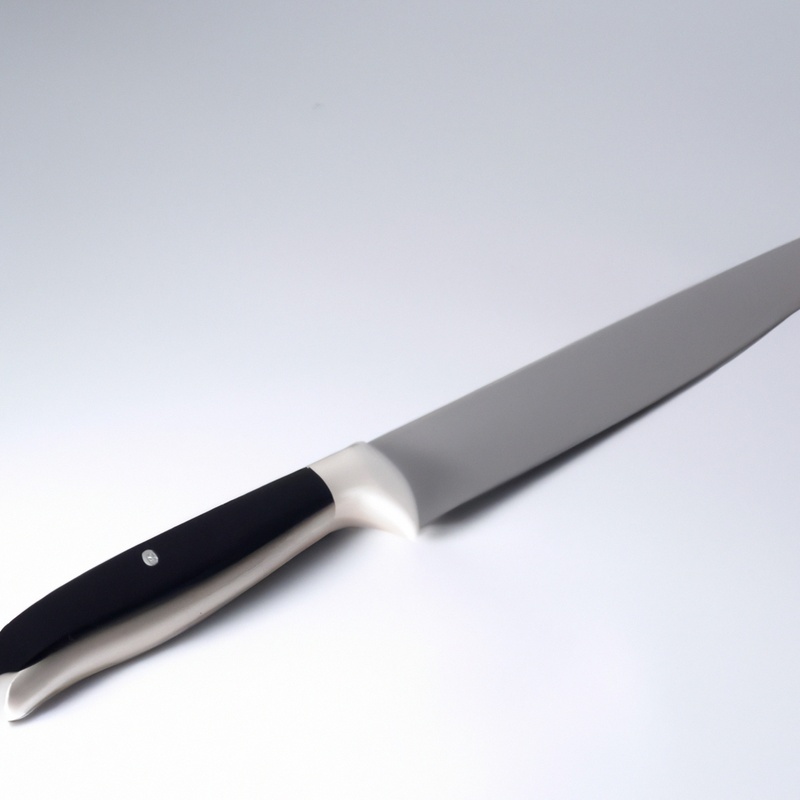
Best practices for storing and organizing chef knives to prevent cross-contamination
Proper storage and organization of chef knives is crucial in preventing cross-contamination in the kitchen. Below are some best practices to avoid contamination:
- Use a knife block or magnetic strip: A knife block or magnetic strip keeps knives upright, preventing contact with other utensils and surfaces.
- Assign each knife a specific purpose: Ensure each knife has a specific purpose to avoid using the wrong tool for the job and thus cross-contamination.
- Clean knives before storage: Give knives a quick wash with warm soap and water and dry thoroughly before storing them.
- Avoid storing knives in drawers: Storing knives in drawers can cause them to get damaged and makes it easy for them to come into contact with other utensils, increasing the risk of cross-contamination.
- Label knives: Use labels to identify knives designated for specific purposes or food types. This helps remind staff which knives to use for which tasks.
- Store knives separately: Store knives separately from other utensils, preferably in their own drawer or container, to reduce the risk of cross-contamination.
Following these best practices can help keep your kitchen safe and free from cross-contamination.
Final Verdict
Preventing cross-contamination in the kitchen is crucial for maintaining the health and safety of your customers and staff. By understanding how cross-contamination occurs with a chef knife, implementing proper sanitation techniques, using color-coded knives, individual cutting boards, and establishing a cleaning and sanitation schedule, you can significantly reduce the risk of contamination in your kitchen.
Educating your staff on the importance of cross-contamination prevention methods and maintaining personal hygiene are also essential factors.
By implementing best practices for storing and organizing chef knives, you can ensure a safe and hygienic kitchen environment. Remember, a successful kitchen is built on trust, and preventing cross-contamination with your chef knives is a key component in earning that trust.
So practice good hygiene and sanitation, follow the guidelines presented here, and build an impeccable reputation as a safe and reliable culinary professional.

